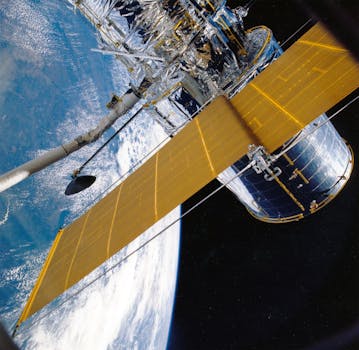
GEO Satellites: Unlocking the Power of Geostationary Orbit
GEO satellites, or Geostationary satellites, are a type of satellite that orbits the Earth at an altitude of approximately 36,000 kilometers, allowing them to remain stationary relative to a fixed point on the equator. This unique characteristic makes them an essential component of modern telecommunications, navigation, and weather forecasting. In this article, we will delve into the world of GEO satellites, exploring their history, benefits, and applications.
Geostationary orbit was first proposed by science fiction writer Arthur C. Clarke in 1945, and the first GEO satellite, Syncom 2, was launched in 1963. Since then, hundreds of GEO satellites have been launched, providing a wide range of services, including television broadcasting, telecommunications, weather forecasting, and navigation. The geostationary orbit offers several advantages, including the ability to provide continuous coverage of a specific region, reduced signal latency, and increased signal strength.
Benefits and Applications of GEO Satellites
GEO satellites have numerous benefits and applications, making them a crucial part of modern society. One of the primary benefits of GEO satellites is their ability to provide continuous coverage of a specific region. This makes them ideal for applications such as television broadcasting, where a signal needs to be transmitted to a wide audience. GEO satellites are also used for telecommunications, providing internet connectivity to remote and underserved areas. Additionally, GEO satellites are used for weather forecasting, allowing meteorologists to monitor and predict weather patterns.
GEO satellites are also used for navigation, providing location information and timing signals to GPS receivers. This is particularly important for aviation, maritime, and land transportation, where accurate navigation is critical. Furthermore, GEO satellites are used for scientific research, such as studying the Earth’s climate, monitoring ocean currents, and tracking natural disasters. The geostationary orbit also offers a unique perspective on the Earth, allowing scientists to study the planet’s atmosphere, oceans, and land masses.
Challenges and Limitations of GEO Satellites
Despite the numerous benefits and applications of GEO satellites, there are also several challenges and limitations. One of the primary challenges is the high cost of launching and maintaining GEO satellites. The launch process is complex and expensive, and the satellites themselves are highly sophisticated and require regular maintenance. Additionally, GEO satellites are vulnerable to space debris, which can cause collisions and damage to the satellites.
Another limitation of GEO satellites is their limited capacity. The geostationary orbit is a relatively small region, and the number of satellites that can be accommodated is limited. This has led to a shortage of available slots, making it difficult for new satellites to be launched. Furthermore, the geostationary orbit is also susceptible to interference from other satellites and terrestrial sources, which can disrupt the signal and affect the quality of service.
Future of GEO Satellites
Despite the challenges and limitations, the future of GEO satellites looks promising. Advances in technology have led to the development of more efficient and cost-effective satellites, such as the use of electric propulsion and advanced materials. Additionally, the development of new launch vehicles and launch techniques, such as reusable rockets, has reduced the cost of launching satellites.
The increasing demand for satellite services, particularly in the areas of telecommunications and navigation, is also driving the growth of the GEO satellite market. New applications, such as satellite-based internet of things (IoT) and 5G networks, are also emerging, which will require the use of GEO satellites. Furthermore, the development of new satellite constellations, such as the OneWeb and SpaceX constellations, will provide increased capacity and coverage, making GEO satellites an even more essential part of modern society.




